Simplified Guide to Build a Sales Enablement Ecosystem to Take Your Sales to Next Level

It is critical to get the different divisions of your company aligned with each other. If your teams are not aligned, it's very challenging for your sales desk to operate properly and convert prospects into customers.
To make sure that your sales team is equipped with all the resources needed to sell more efficiently, you need a sales enablement ecosystem. So much so, that 77% of businesses with more than 500 employees have implemented a solid sales enablement process.
Sales enablement makes it so that sales reps can access the required assets whenever they want and have to depend less on people who have the knowledge they need.
A sales enablement ecosystem ensures that your sales desk is always fully prepared to handle their day-to-day activities and any issues that might arise during any stage of the sales pipeline.
That’s why in this guide, I’ll talk about the steps to build a sales enablement ecosystem that will allow for better collaboration within your sales and marketing teams and will take your sales to another level. But first, let us understand what sales enablement is.
What is a sales enablement?
You might already be aware of what sales enablement is. No need to worry if not. In Layman’s terms, it is a process that makes your sales desk sell more easily and efficiently.
It focuses on supplying your sales team with the required materials and training them to reach out to prospects using the right sales engagement approaches to help close more deals.
How to build a sales enablement ecosystem?
“Sales enablement can’t be reactive. It has to be a full-blown strategy that’s woven into the fabric of the company.” – Roderick Jefferson
Building a sales enablement ecosystem is crucial for streamlining workflows and keeping everyone involved on the same page. With that said, here are a few ways to build a successful sales enablement ecosystem to scale your company to the next level.
Determine your sales enablement goals
To start building your sales enablement ecosystem, you first need to decide on what you wish to accomplish by implementing a sales enablement program. These goals allow you to provide assistance to your sales team and help them in selling more efficiently.
For example, some of the common sales enablement goals include:
- Improving win rate: This includes supplying your sales staff with the proper content and training to help them in interacting with prospects more effectively and finalize more deals.
- Shortening sales pipeline: This involves providing your sales desk with the resources and tools they need to move potential customers through the sales pipeline, lowering the time a lead spends in a particular stage.
- Improving customer retention: Here, you provide your sales reps with the customers’ data and previous interactions they had with your company, so they can better cater to customers' needs by asking meaningful sales qualifying questions. This helps in building customer loyalty and increasing customer satisfaction.
Make sure that your goals are SMART: Specific, measurable, actionable, relevant, and time-bound. This allows you to set realistic objectives that you can work towards. To decide your sales enablement goals, you need to look at the existing state of your sales process and see where your sales team is having trouble. Or in which part of the pipeline the prospects get stuck the longest.
Once you have identified these areas, you can work towards rectifying the problem by giving your sales team relevant resources and generating suitable content that will help them overcome those obstacles and improve your overall sales process for business growth.
Develop a content strategy
Content is a crucial aspect of the sales enablement ecosystem. It is the primary thing your sales agents turn to when they face any difficulties. For this reason, you should have a content strategy in place.
When developing a content strategy, think about the type of content you want to create. This could include:
Product documentation
Product documents are the collection of your written content that lets your sales team understand the product and its features. It is a comprehensive set of documents that lets your sales desk understand a product and how to make the most of it.
Just like how Zixflow does with its help center. It is a sales enablement software that lets your sales team be more efficient. In order to make sure that your sales reps can understand its functions and options, Zixflow has put in place a knowledge center that contains details about all the product features.
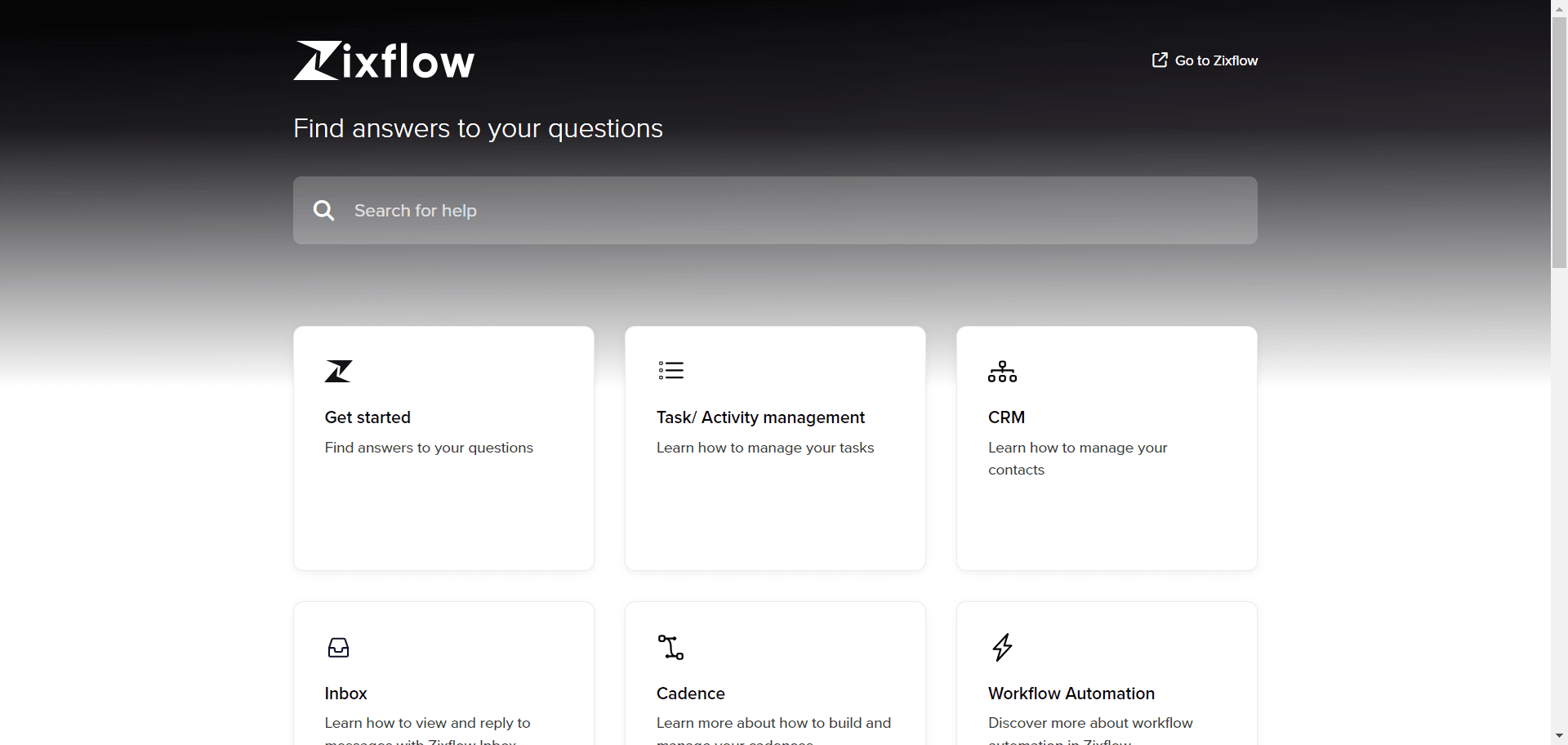
Sales playbook
It is a guide or an in-depth document that defines the strategies and processes for your sales reps to follow when they are interacting with a prospect. A sales playbook serves as a reference manual for your sales team, helping them understand the sales process.
And a leading IT company, Cisco, uses a sales playbook that includes everything its sales desk might need to sell its cloud-based solutions. A lengthy playbook could look too complex for the reps, but Cisco added a table of content for easy navigation and to find the required information.
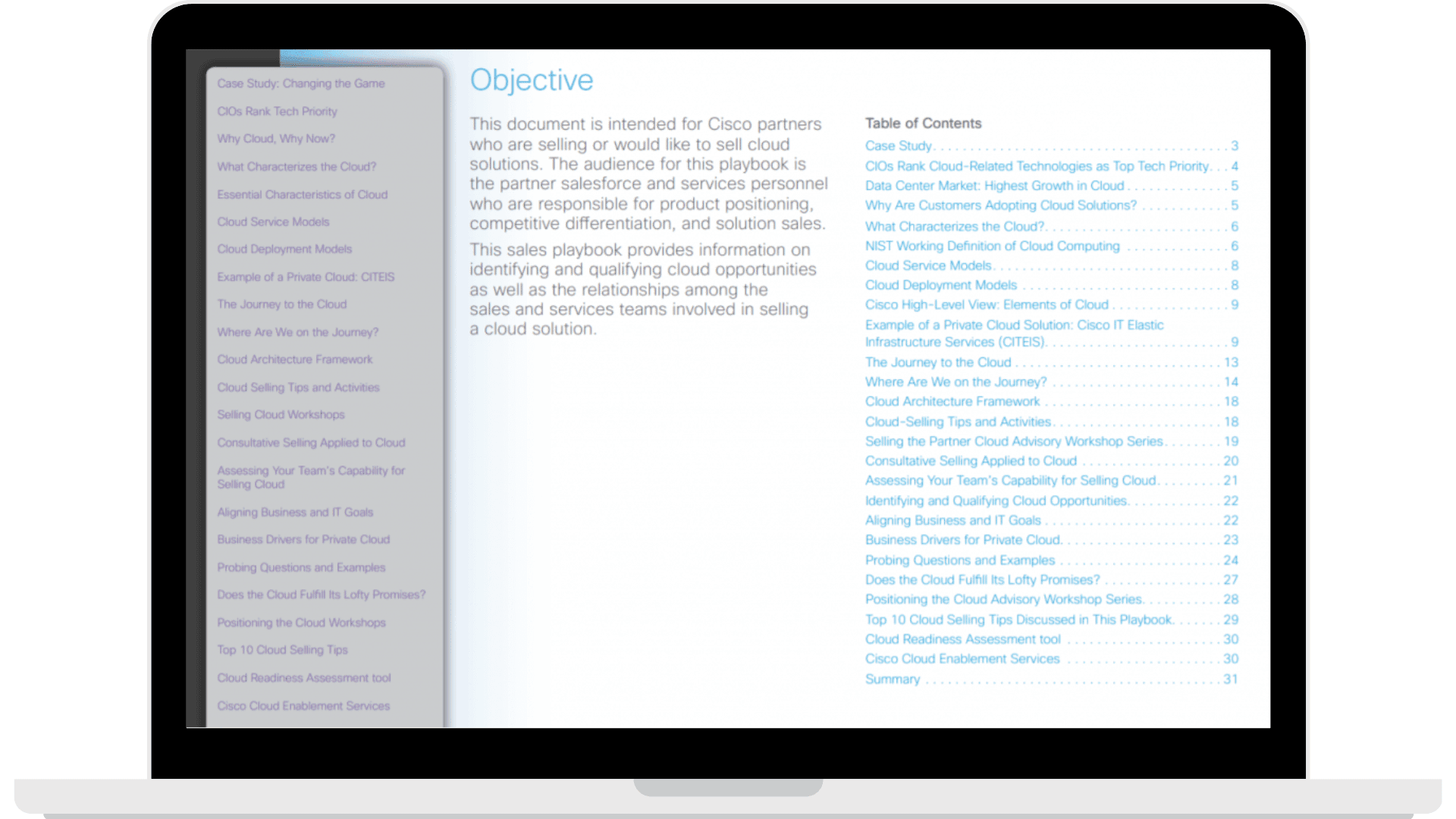
Competitor battlecards
Competitor battlecards, also referred to as competitive battlecards or sales battlecards are brief documents that offer important details about your competitors to your sales team. These battlecards help your sales reps in positioning your products or services against your competitors when interacting with customers.
Here is the competitor battlecard used by SmartBug, a digital marketing agency, to position itself against its competitors and tell its customers about the advantages they offer compared to them.
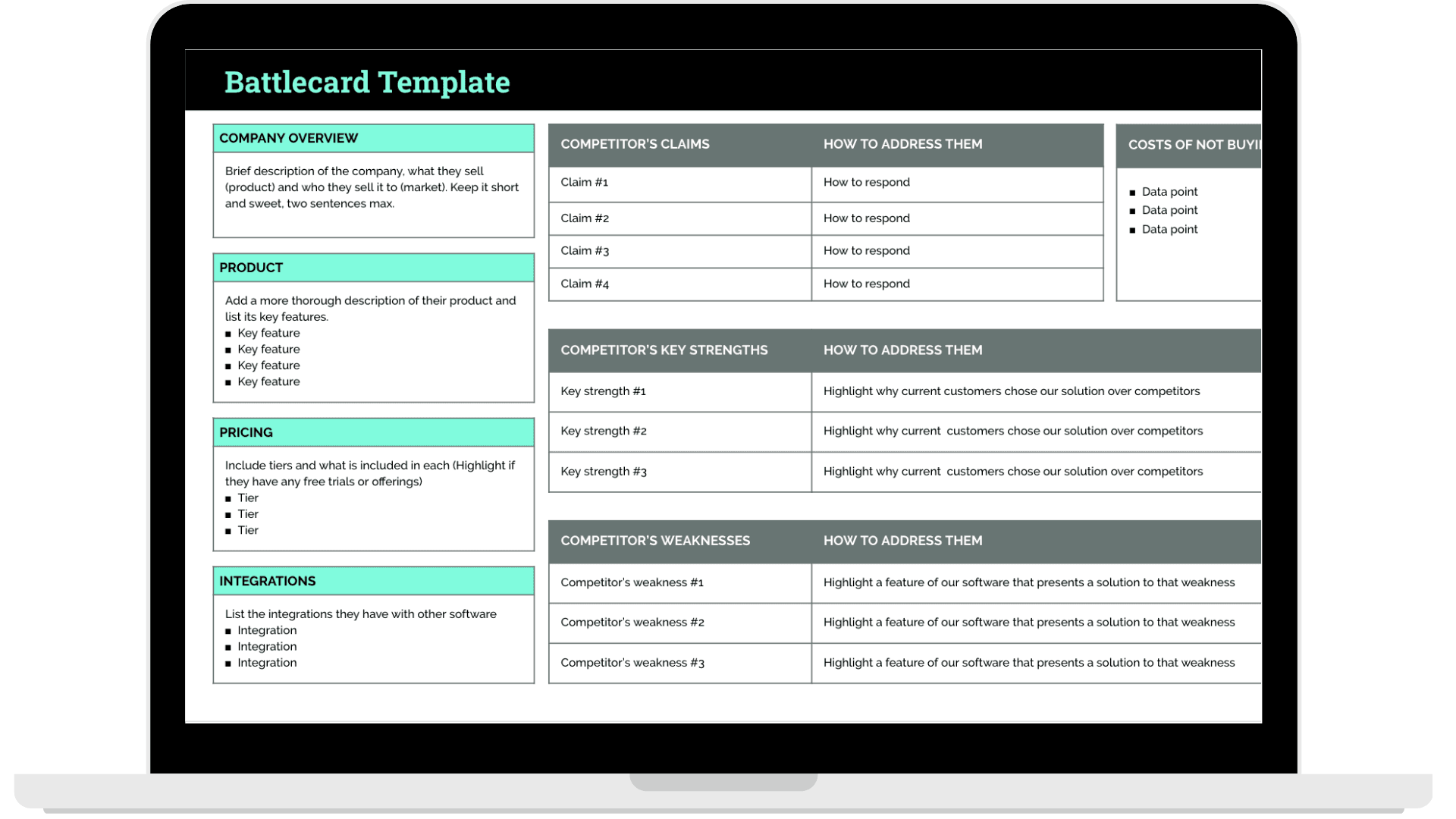
Generate your content
Once you have developed a content strategy and determined the type of documents you want to produce, the next step is to begin creating that type of content. After you have created the content, ensure that it is accessible to all the members of your sales team.
For example, Zixflow has compiled all of its tutorial videos in a single place, making it easy for the sales team to understand its features.
The procedure to generate different types of content somewhat differs from each other. For instance, if you want to produce text-based content, you need to either hire a content writer or a content marketing agency to help you with that.
You can also ask your experienced sales managers to create relevant content that your sales reps can use if they come across any trouble.
Use sales enablement technology
If you want to do something efficiently, you need the right tools for it. And same is the case with your sales enablement program. You should first, look at the areas in your current sales process and see what you can optimize using a tool.
Some of the common sales enablement tools that you will need to create a sales enablement ecosystem are:
Modern SalesOS like Zixflow
Zixflow is a complete SalesOS that provides a holistic view of your sales process. It eliminates the need to choose between a sales engagement software or a CRM platform. It is a Saas platform with sales enablement and sales tools that you can add to your existing sales stack or you can use it as standalone software for all your sales needs.
It includes a sales CRM platform, which will let you create a centralized database for your data and previous interactions with prospects. This allows your sales team to readily access this information to understand what your customers need.
Sales content management
Content management systems allow you to manage your content and keep it updated regularly. These platforms help your sales team effectively organize, access, and distribute relevant content through the sales process.
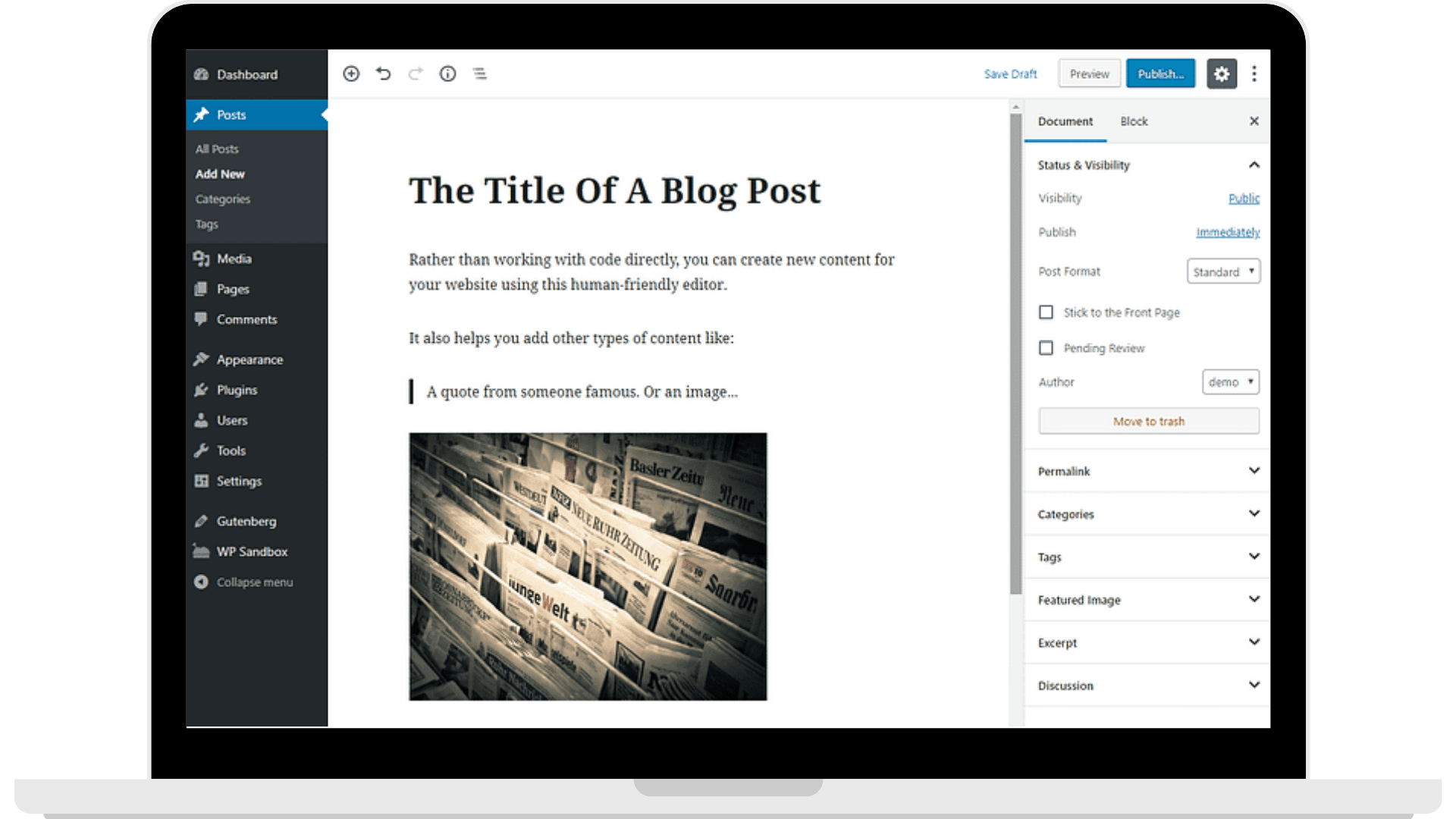
Sales engagement platforms
Sales engagement is the process of engaging with prospects. The tools you need for this should allow you to integrate different means of communication into a unified interface and offer features to track interactions across the sales pipeline.
Sales engagement platforms like Zixflow, allow your sales desk to personalize the outreach campaigns to engage with prospects more effectively.

Sales cadence software
A sales cadence is a set of sequences that your sales reps use to interact with prospects. Setting up an effective cadence usually requires particular applications but with Zixflow, you can create sales cadences from single software.
The sales cadence platform of Zixflow lets you build cadences, set various triggers, and decide the time and date at which you want to send emails to the prospect.
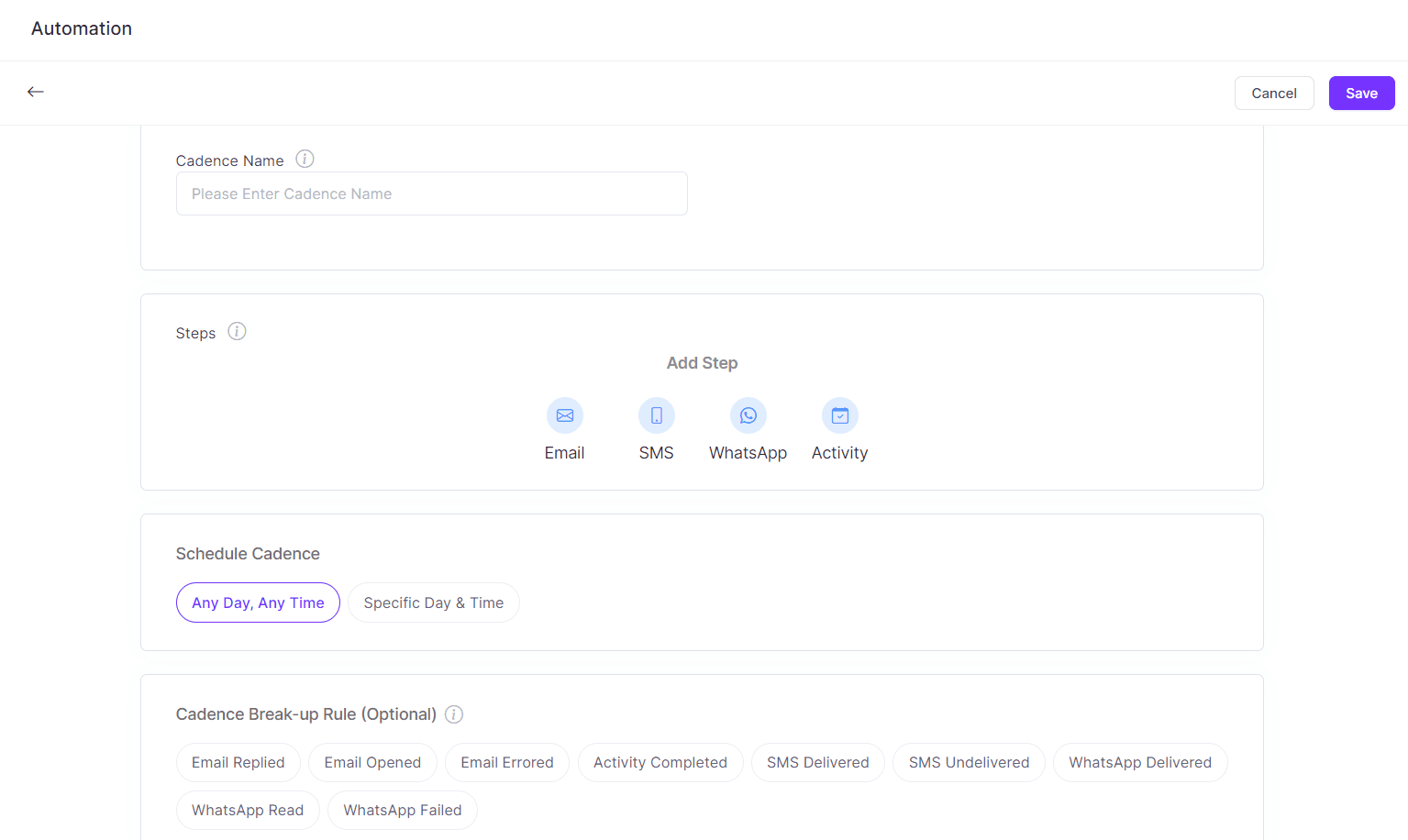
Train your sales team
Imagine this, what would you do if you were asked to do something but no one provided you with any guidance or coaching? Would you be able to perform effectively and efficiently? The same goes for your sales team.
If you want your sales reps to effectively market your products or services, you have to give them the proper knowledge to do it. This also ensures that your sales desk is aligned with your business’s goals, is familiar with multiple types of sales, and ultimately, drives more sales revenue.
To do this, you need to create a training program, keeping in mind that your program is relevant to your business and strengthens the overall sales process.
On top of that, you have to use various training techniques, such as 1:1 training, group discussions, webinars, and presentations. This way, you can take into account multiple learning styles and ensure that every member of your sales staff is trained properly.
Monitor your sales enablement ecosystem
Lastly, you have to be certain that your sales enablement ecosystem is effective in assisting your sales team and driving the company's growth. Metrics and indicators provide you with a clear picture of your sales enablement efforts and tell you what is working and what isn’t.
To begin with, you have to choose the metrics you want to measure. These metrics should be aligned with your sales enablement goals and be trackable. So, to help you with this step, here are a few metrics you can track to see the effectiveness of your sales enablement ecosystem:
Content engagement
This metric tells you how your sales teams are interacting and using the training content that you have provided.
Sales productivity
This shows how productive your sales team has been. It includes the number of times they reach out to customers, schedule a meeting, or send emails.
Revenue growth
This measures the total revenue your sales desk has generated over a period of time. It helps you in finding out how effective your sales enablement efforts are on your income.
Adoption rate
This metric tracks how many of your sales reps are actively utilizing the sales enablement resources. To calculate it, take the number of reps who are using the resources divided by the total number of reps in your company times 100.
So, it is important to track your metrics to know where you are going with your sales enablement initiatives. That’s why Zixflow lets you measure the metrics from its robust analytics dashboard.
Empower your team with a sales enablement ecosystem
By now, you must have gotten a pretty good understanding of what the sales enablement ecosystem is. It is extremely important in today’s world that your sales team should first focus on building relationships with customers and then try to sell them your offerings as a solution.
To ensure that your sales desk is doing the right thing and not letting go of the opportunities to turn leads into paying customers, you must have a sales enablement program in place. That’s why, here is a sales enablement checklist with all the things you have to do to build a strategic sales enablement framework for your company.
And Zixflow can help you with that. It is outbound sales software that lets you manage all your buyers’ data in one place. Plus, it allows you to automate sales workflows to lower the workload on your sales staff.
And this is just the preview. To experience the full capacity of Zixflow, book a personalized demo today and see how it enables your sales team to close more sales.
